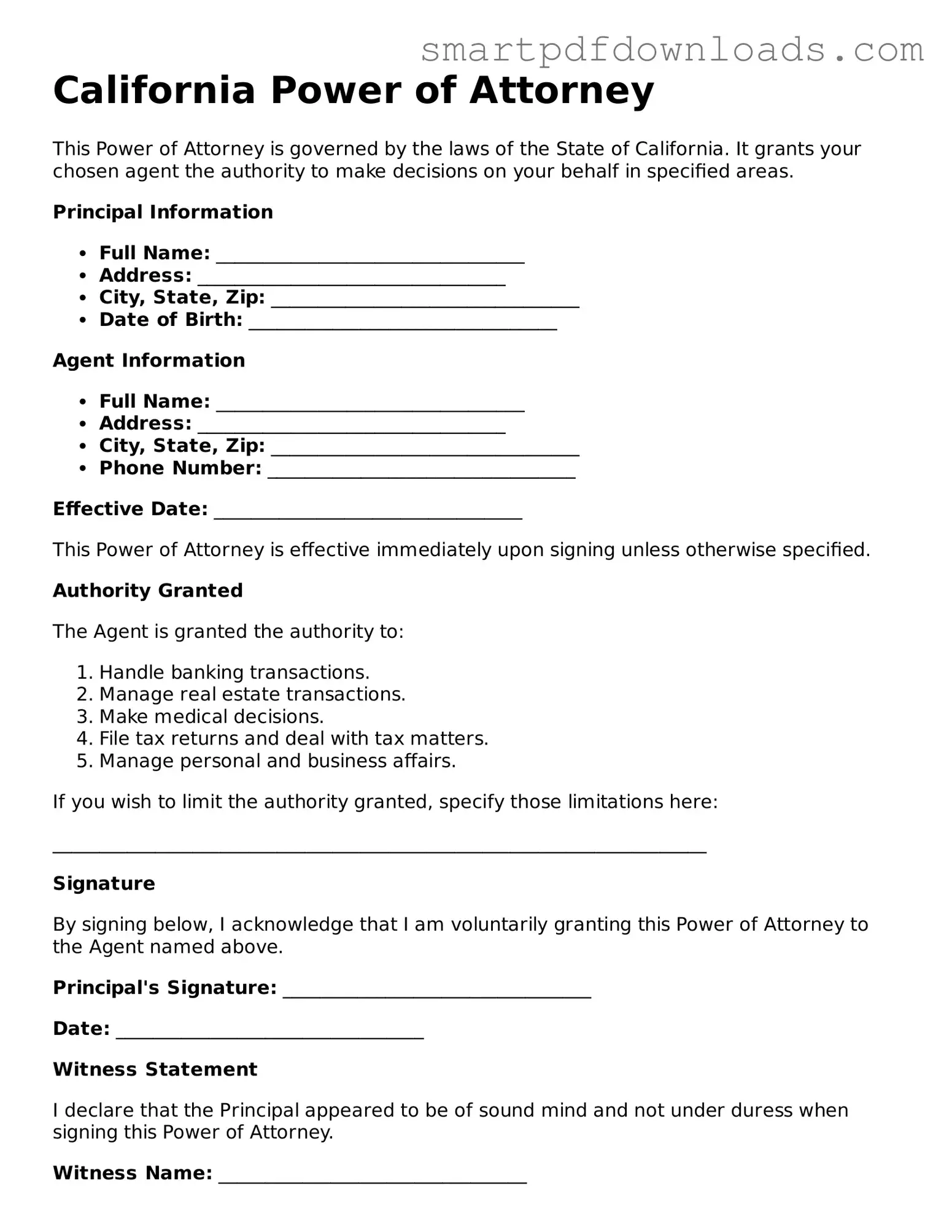California Power of Attorney
This Power of Attorney is governed by the laws of the State of California. It grants your chosen agent the authority to make decisions on your behalf in specified areas.
Principal Information
- Full Name: _________________________________
- Address: _________________________________
- City, State, Zip: _________________________________
- Date of Birth: _________________________________
Agent Information
- Full Name: _________________________________
- Address: _________________________________
- City, State, Zip: _________________________________
- Phone Number: _________________________________
Effective Date: _________________________________
This Power of Attorney is effective immediately upon signing unless otherwise specified.
Authority Granted
The Agent is granted the authority to:
- Handle banking transactions.
- Manage real estate transactions.
- Make medical decisions.
- File tax returns and deal with tax matters.
- Manage personal and business affairs.
If you wish to limit the authority granted, specify those limitations here:
______________________________________________________________________
Signature
By signing below, I acknowledge that I am voluntarily granting this Power of Attorney to the Agent named above.
Principal's Signature: _________________________________
Date: _________________________________
Witness Statement
I declare that the Principal appeared to be of sound mind and not under duress when signing this Power of Attorney.
Witness Name: _________________________________
Witness Signature: _________________________________
Date: _________________________________
